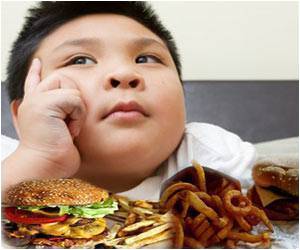A recent study reports that younger siblings of children with autism spectrum disorders do not perform as well on tests of social and communication development
A recent study reports that younger siblings of children with autism spectrum disorders do not perform as well on tests of social and communication development as siblings of children without developmental problems.
The study included siblings aged as young as 12 months. The report is published in the April issue of Archives of Pediatrics & Adolescent Medicine, a theme issue on autism spectrum disorders.Studies of twins and families indicate that autism and related disorders have a genetic basis, according to background information in the article. This includes milder conditions known as the "broader autism phenotype," consisting of traits that are similar to those associated with autism but are not severe enough to cause disability. Approximately 6 to 9 percent of younger siblings of children with autism spectrum disorders (including autism and related conditions) develop autism spectrum disorders, and others may demonstrate features of the broader autism phenotype.
Wendy L. Stone, Ph.D., and colleagues at Vanderbilt University, Nashville, Tenn., studied 64 younger siblings of children with autism spectrum disorders and 42 younger siblings of children with typical development. The siblings were between the ages of 12 and 23 months (average age 16 months) when they were assessed between 2003 and 2006. Participating children were measured using tests of thinking, learning and memory; an interactive screening tool assessing play, imitation and communication; and a scale rating autism symptoms. Parents were also interviewed and filled out questionnaires regarding their children’s social, communication and language skills.
"Younger siblings of children with autism spectrum disorders demonstrated weaker performance in non-verbal problem-solving, directing attention, understanding words, understanding phrases, gesture use and social-communicative interactions with parents, and had increased autism symptoms, relative to control siblings," the authors write. The pattern of scores on tests suggested that a substantial minority of the siblings of autistic children had low scores, as opposed to a few extremely low performers who may have deceptively brought down the average scores. In addition, "the consistency of results obtained across different methods highlights the robustness of these findings."
The weaker performance of siblings of children with autism spectrum disorder may represent early signs of the broader autism phenotype, and highlights the importance of closely monitoring these at-risk children for developmental problems, the authors note. "This research has the potential to increase our knowledge about the early development of autism and to develop tailored intervention and prevention strategies for promoting optimal outcomes in this group of at-risk children," they conclude.
Source-Eurekalert
PRI










